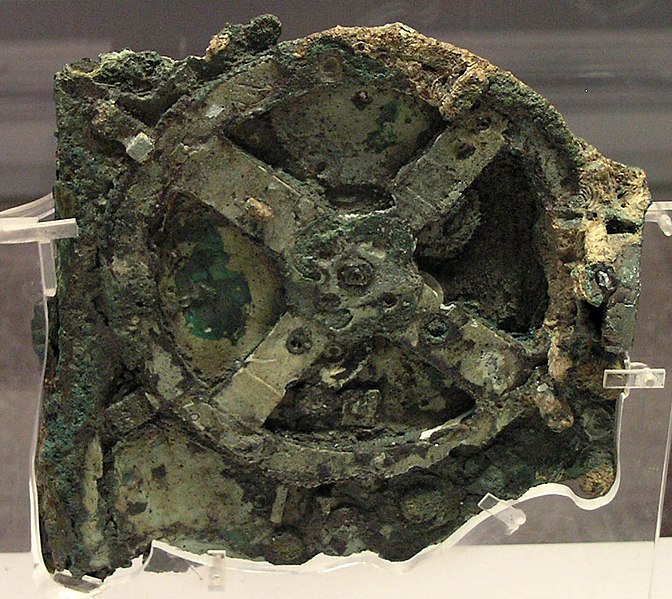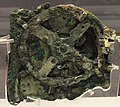فایل:NAMA Machine d'Anticythère 1.jpg

سیناق گؤستریشی اؤلچوسو: ۶۷۲ × ۵۹۹ پیکسل. آیری کیفیتلر: ۲۶۹ × ۲۴۰ پیکسل | ۵۳۸ × ۴۸۰ پیکسل | ۸۶۱ × ۷۶۸ پیکسل | ۱٬۰۳۶ × ۹۲۴ پیکسل.
فایلین اصلی (۱٬۰۳۶ × ۹۲۴ پیکسل, فایل اؤلچوسو: ۲۰۷ کیلوبایت, MIME نوعو: image/jpeg)
فايل گئچمیشی
فايلین اولکی وئرسیياسینی گؤرمک اۆچون گۆن/تاریخ بؤلمهسیندهکی تاریخلری تێقلايین.
| تاریخ/واخت | کیچیک عکس | اؤلچولر | ایشلدن | باخیش | |
|---|---|---|---|---|---|
| ایندیکی | ۲۰ دسامبر ۲۰۰۵، ساعت ۱۰:۴۸ |  | ۱٬۰۳۶ در ۹۲۴ (۲۰۷ کیلوبایت) | Marsyas | Fragment principal de la machine d'Anticythère. Le mécanisme consiste en un système complexe de 32 roues et plaques portant des inscriptions relatives aux signes du zodiac et aux mois. L'étude des fragments suggère qu'il s'agissait d'une sorte d'astr |
فايل ایشلدمهسی
آشاغیداکی صحیفه بو فایلا باغلانیر
فایلین باشاباش ایشلنیلمهسی
بو فایل آشاغی داکی آیری ویکی لرده ایشلَنیر:
- ab.wikipedia.org-ده ایشلنمهسی
- af.wikipedia.org-ده ایشلنمهسی
- als.wikipedia.org-ده ایشلنمهسی
- ang.wikipedia.org-ده ایشلنمهسی
- anp.wikipedia.org-ده ایشلنمهسی
- an.wikipedia.org-ده ایشلنمهسی
- ar.wikipedia.org-ده ایشلنمهسی
- ast.wikipedia.org-ده ایشلنمهسی
- az.wikipedia.org-ده ایشلنمهسی
- bcl.wikipedia.org-ده ایشلنمهسی
- be-tarask.wikipedia.org-ده ایشلنمهسی
- be.wikipedia.org-ده ایشلنمهسی
- bg.wikipedia.org-ده ایشلنمهسی
- bn.wikipedia.org-ده ایشلنمهسی
- bs.wikipedia.org-ده ایشلنمهسی
- ca.wikipedia.org-ده ایشلنمهسی
- ce.wikipedia.org-ده ایشلنمهسی
- cs.wikipedia.org-ده ایشلنمهسی
- cv.wikipedia.org-ده ایشلنمهسی
- da.wikipedia.org-ده ایشلنمهسی
بو فایلینسراسری ایستفاده لرینه باخین.

